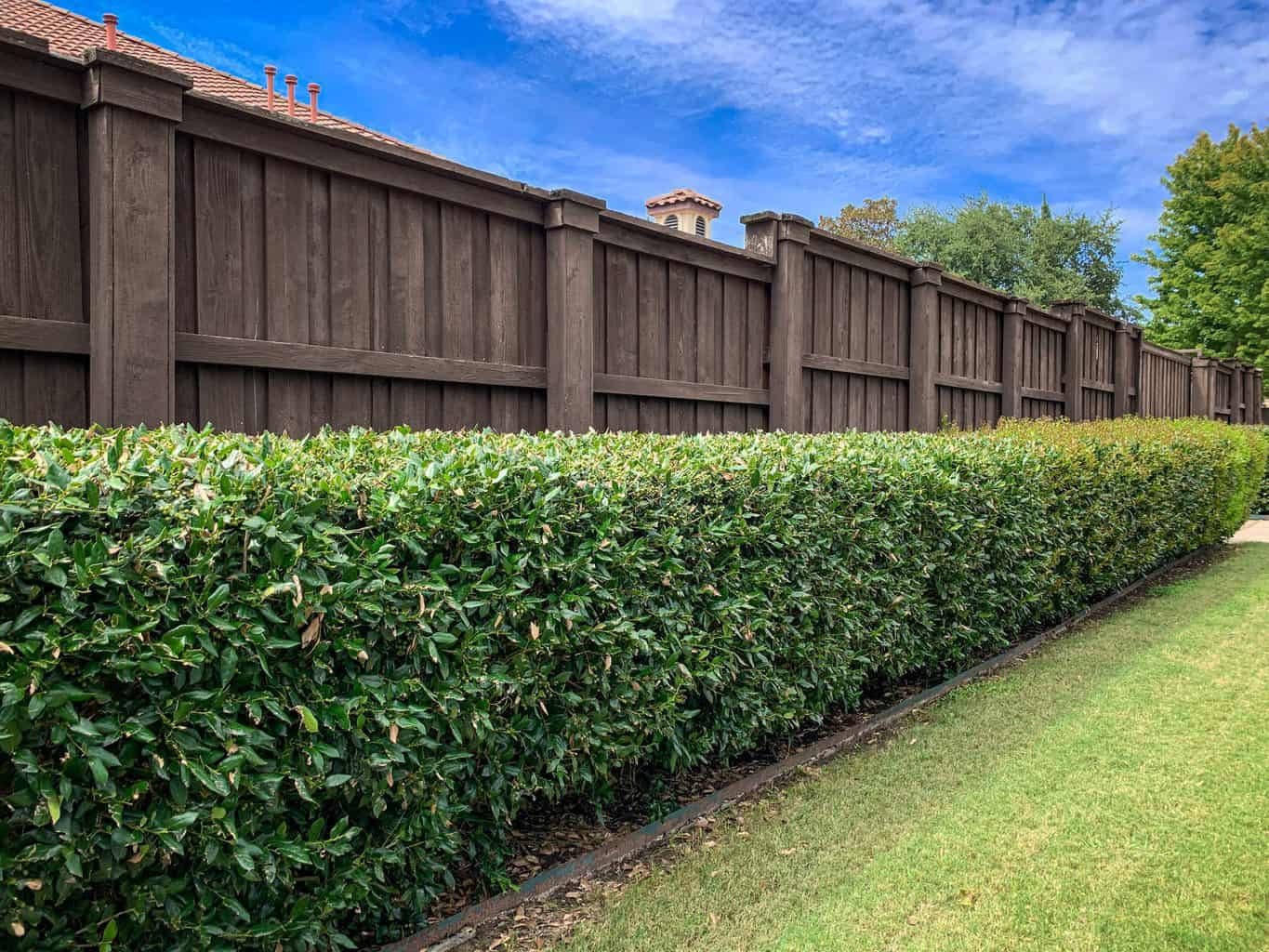Design And Build Your Own Living Fence

Table of Contents
Dreaming of a natural, vibrant boundary for your property? A living fence, crafted from carefully selected plants, offers a stunning alternative to traditional fencing. It provides a beautiful, eco-friendly solution that enhances your landscape and boosts curb appeal. This guide provides a step-by-step approach to designing and building your own living fence, ensuring it thrives for years to come. We’ll cover everything from choosing the right plants to ongoing maintenance, transforming your outdoor space from ordinary to extraordinary.
Planning Your Living Fence Design
Before you even pick up a shovel, careful planning is crucial for a successful living fence. This section focuses on the key design elements to consider.
Choosing the Right Location
Site selection significantly impacts the success of your living fence. Consider these crucial factors:
- Assess sunlight hours: Determine how much sunlight the area receives throughout the day. South-facing locations generally receive more sun, impacting plant selection. Plants requiring full sun need at least six hours of direct sunlight daily, while shade-tolerant options thrive with less.
- Perform a soil test: Understanding your soil's composition (pH level, drainage, nutrient content) is critical. A soil test kit from a garden center will provide this vital information. Well-drained soil is crucial for most plants; amend heavy clay soils with organic matter to improve drainage.
- Determine the desired height and density: How tall and dense do you want your living fence to be? This will dictate plant choices and support structures. Consider the desired level of privacy and visual screening.
Well-planned location selection ensures your living fence thrives.
Selecting the Perfect Plants
Choosing the right plants is paramount. Consider these factors:
- Evergreen vs. deciduous options: Evergreens provide year-round screening, while deciduous plants offer seasonal color changes and may allow more sunlight penetration in winter.
- Flowering vs. non-flowering varieties: Flowering plants add vibrant color and attract pollinators, while non-flowering options provide a more subtle, consistent look.
- Thorny plants for added security: Consider thorny plants like hawthorn or pyracantha for increased security and deterrents.
Research plants native to your area. Native plants are better adapted to local conditions, requiring less maintenance and promoting biodiversity. Remember to consider the mature size of your chosen plants to avoid overcrowding.
Determining Fence Height and Length
Measure your property line carefully to determine the length of your living fence. Consider:
- Local zoning regulations: Check your local ordinances regarding fence height restrictions.
- Visual impact on the landscape: A tall fence might overwhelm a small property, while a shorter one might be insufficient for screening.
- Desired level of privacy: Taller fences offer greater privacy, but require more robust support structures and potentially more extensive maintenance.
Consider the mature height of your chosen plants. Choose plants that will achieve your desired height within a reasonable timeframe.
Building Your Living Fence
Once the planning stage is complete, it’s time to get your hands dirty!
Preparing the Site
Before planting, prepare the site thoroughly:
- Remove weeds and existing vegetation: Clear the area of any competing plants to allow your living fence to thrive.
- Improve soil drainage and fertility: Amend the soil with compost or other organic matter to improve drainage and fertility, creating the ideal growing environment for your plants.
- Install posts and wires for support (if necessary): For climbing plants, install sturdy posts and wires to provide support as they grow.
Proper site preparation sets the stage for a healthy and vigorous living fence.
Planting Your Chosen Species
Follow these steps for successful planting:
- Dig appropriate-sized holes: Ensure the holes are large enough to accommodate the root ball of each plant without cramping.
- Space plants evenly: Follow recommended spacing guidelines for your chosen species to prevent overcrowding.
- Water thoroughly after planting: Give newly planted saplings a good watering to help them settle in.
Refer to the specific planting instructions for each plant species. Consider using plant protectors to shield young seedlings from pests and harsh weather conditions.
Providing Ongoing Support (if needed)
Climbing plants need guidance to grow effectively:
- Use plant ties or other supports: Gently guide climbing plants along trellises or fences using plant ties or other suitable supports.
- Regularly prune to maintain desired shape: Regular pruning keeps your living fence looking neat and encourages bushier growth.
Regular pruning is essential for maintaining shape and controlling growth.
Maintaining Your Living Fence
Maintaining your living fence is crucial for its long-term health and beauty.
Watering and Fertilizing
Consistent watering and fertilization are vital:
- Water deeply and less frequently: Deep watering encourages deeper root growth. Avoid shallow, frequent watering, which can lead to shallow roots.
- Apply fertilizer according to package instructions: Use a fertilizer specifically formulated for the type of plants in your living fence.
- Mulch around plants to retain moisture: A layer of mulch helps retain moisture, suppress weeds, and regulate soil temperature.
Overwatering can be just as detrimental as underwatering. Monitor soil moisture levels regularly.
Pruning and Shaping
Regular pruning keeps your living fence looking its best:
- Remove dead or damaged branches: Remove any dead, diseased, or damaged branches to promote healthy growth.
- Trim overgrown sections: Trim any sections that are growing out of bounds or becoming unruly.
- Shape the fence to your liking: Maintain the overall shape and aesthetic of your living fence through regular pruning.
Pruning improves the health and longevity of your living fence.
Pest and Disease Control
Address pest and disease issues promptly:
- Identify the problem: Accurately identify any pests or diseases affecting your plants.
- Implement appropriate control measures: Use appropriate control methods, considering organic options whenever possible.
- Prevent future issues through good maintenance practices: Good maintenance practices, such as proper watering and fertilization, can help prevent future problems.
Early detection and treatment are key to preventing significant damage.
Conclusion
Designing and building your own living fence is a rewarding project that offers both aesthetic and environmental benefits. By following these steps and selecting the appropriate plants for your location, you can create a stunning, natural boundary that enhances your property's beauty and provides years of enjoyment. Start planning your own living fence today! Remember to research the specific needs of your chosen plants to ensure a thriving and beautiful living fence for years to come. Embrace the beauty and functionality of a living fence and transform your landscape!

Featured Posts
-
 Seattle Police Seek Publics Help In First Hill Homicide Investigation
May 29, 2025
Seattle Police Seek Publics Help In First Hill Homicide Investigation
May 29, 2025 -
 Pobediteli 47 Go Moskovskogo Mezhdunarodnogo Kinofestivalya Nazvany
May 29, 2025
Pobediteli 47 Go Moskovskogo Mezhdunarodnogo Kinofestivalya Nazvany
May 29, 2025 -
 Ritka Kincsek A Vateran Rekordarak A Legkeresettebb Targyakert
May 29, 2025
Ritka Kincsek A Vateran Rekordarak A Legkeresettebb Targyakert
May 29, 2025 -
 Uma Frase Para A Historia O Trailer Que Mudou O Cinema
May 29, 2025
Uma Frase Para A Historia O Trailer Que Mudou O Cinema
May 29, 2025 -
 Gewapende Overval Op School 16 Jarige Verdachte Aangehouden
May 29, 2025
Gewapende Overval Op School 16 Jarige Verdachte Aangehouden
May 29, 2025
